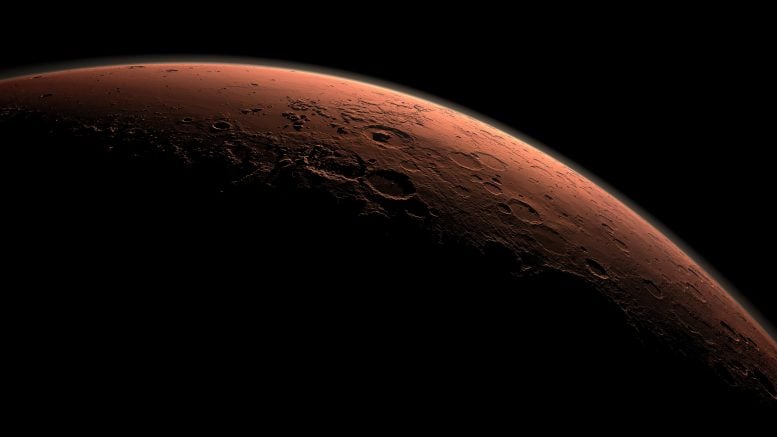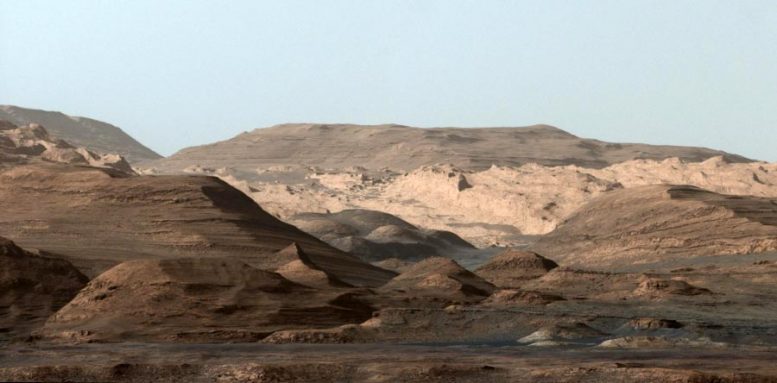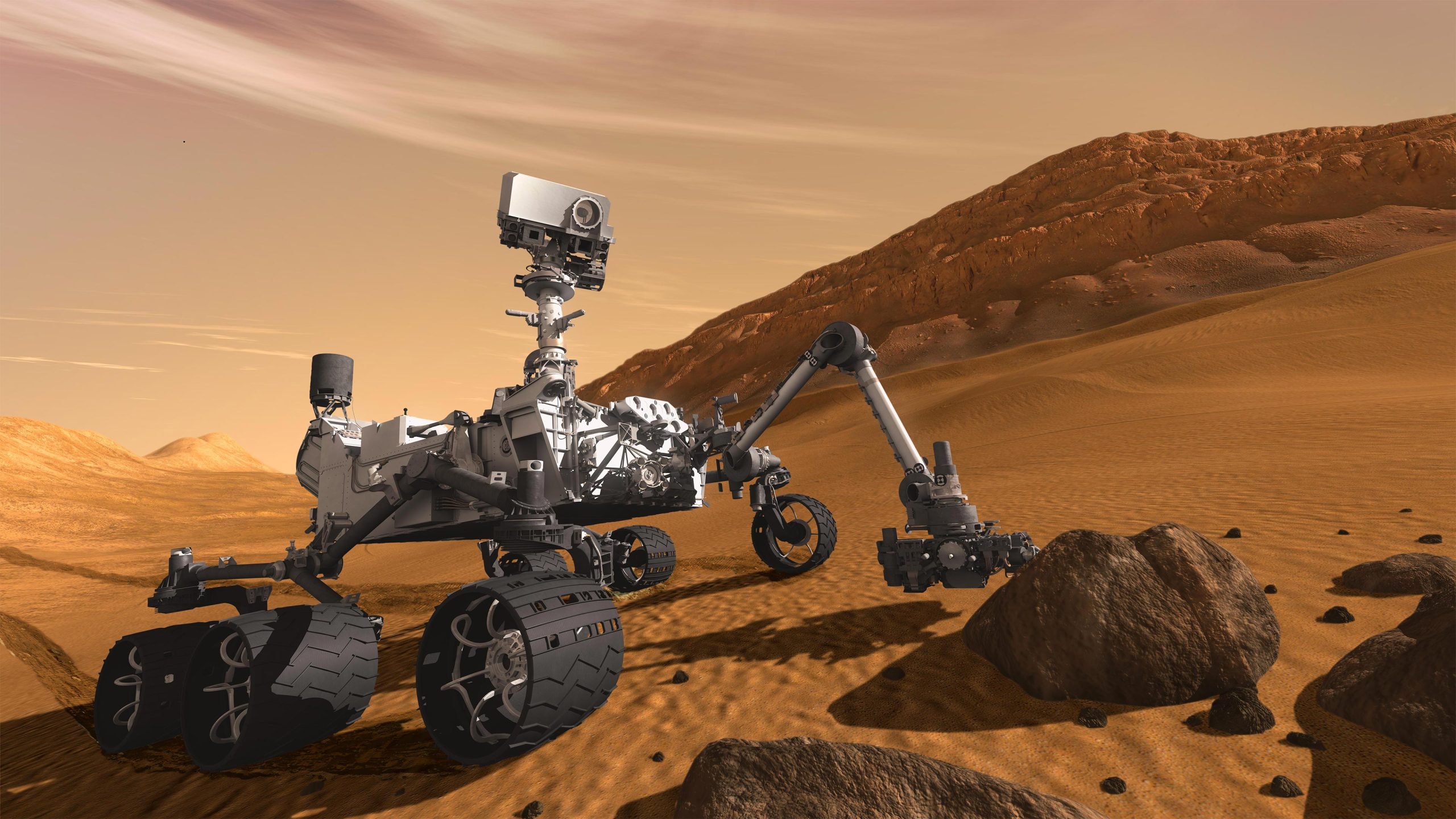NASA’s Curiosity rover has discovered organic material on Mars that may have formed through atmospheric photochemical reactions, suggesting a prebiotic origin for these compounds. Researchers, including those from the University of Copenhagen and Tokyo Institute of Technology, linked these findings to a process called photolysis, where UV light from the sun breaks down CO2, leading to the formation of organic materials without life. Credit: NASA/JPL-Caltech
Two samples from building blocks of life.
New Insights and Theoretical Advances
However, for the research collaboration behind a new study published in the journal decade old theory of his about so-called photolysis in Mars’ atmosphere.
With the Curiosity sample, the new research is able to prove with reasonable certainty that the Sun broke down CO2 in the Martian atmosphere billions of years ago — as the old theory predicted. And that the resulting carbon monoxide gradually reacted with other chemicals in the atmosphere synthesizing complex molecules – and thus providing Mars with organic materials.

Daybreak at the Gale Crater on Mars where organic material was found. Credit: NASA/JPL-Caltech
“Such carbon-based complex molecules are the prerequisite of life, the building blocks of life one might say. So, this it is a bit like the old debate about which came first, the chicken or the egg. We show that the organic material found on Mars has been formed through atmospheric photochemical reactions — without life that is. This is the ‘egg’, a prerequisite of life. It still remains to be shown whether or not this organic material resulted in life on the Red Planet.” said Johnson and continued:
“Additionally because Earth, Mars, and 
Mount Sharp in the center of Gale Crater on Mars where organic material was found by Curiosity Rover. Credit: NASA’s Mars Curiosity Rover
Future Research and Earth’s Geological Complexity
Because the organic material contains this isotopic “fingerprint” of where it came from, researchers are able to trace the source of the carbon in the organic material to the carbon monoxide formed by photolysis in the atmosphere. But this also reveals a lot about what happened to it in between.
“This shows that carbon monoxide is the starting point for the synthesis of organic molecules in these kinds of atmospheres. So we have an important conclusion about the origin of life’s building blocks. Although so far only on Mars,” said Matthew Johnson.
Extra Info: The Famous Mars Meteorite
The discovery of organic sediments on Mars with a low ratio of carbon-13 completes the puzzle of empirical evidence for the photolysis theory, since researchers already found the other part of that puzzle years ago in the famous meteorite, Allan Hills 84001. The meteorite contains carbonate with a heightened concentration of heavy carbon 13 isotopes.
Discovered in Antarctica 40 years ago by Roberta Score, the meteorite is believed to originate from the Red Planet and became particularly well known because it contains some deposits that led NASA researchers to announce in 1996 that they believed they had found traces of microscopic fossils of bacteria from Mars.
Today, the consensus is that these deposits are abiotic — that is, stemming from non-biological processes.
Researchers hope to find the same isotopic evidence on Earth, but this has yet to happen, and it could be a much bigger challenge because our geological development has changed the surface significantly compared to Mars, Johnson explains.
“It is reasonable to assume that the photolysis of CO2 was also a prerequisite for the emergence of life here on Earth, in all its complexity. But we have not yet found this “smoking gun” material here on Earth to prove that the process took place. Perhaps because Earth’s surface is much more alive, geologically and literally, and therefore constantly changing. But it is a big step that we have now found it on Mars, from a time when the two planets were very similar,” says Matthew Johnson.
Extra Info: Mars, Earth, and Venus Had the Same Atmosphere
According to researchers, Earth had approximately the same atmosphere as our neighboring planets Mars and Venus billions of years ago.
When the early planets Venus, Earth, and Mars eventually formed solid surfaces, researchers believe they began to release large amounts of CO2 from extreme volcanic activity. That’s how they formed their first atmospheres with large concentrations of the gas. Oxygen had not yet become part of the atmosphere; this happened later on Earth, after the emergence of life.
The photolysis theory states that UV rays from the sun then start a chain of chemical reactions. A chain that starts with the breakdown of CO2 into carbon monoxide, which is the building block for a multitude of other chemical compounds.
Thus, with the help of the Sun, the foundation for the many carbon compounds and complex molecules we have today was formed — in the case of Earth, the foundation for life.
“Since then the fate of the three planets has been significantly different. Earth’s carbon dioxide reacted with our large amount of surface water and much of it deposited over time as carbonate rocks like limestone, leaving the atmosphere dominated by nitrogen, as we have today. Life arose, and microorganisms produced oxygen, which, among other things, created our ozone layer, while Mars and Venus still have very CO2-dominant atmospheres today,” explains Matthew Johnson.
Today, Venus has a very dense and toxic atmosphere primarily of CO2, which gives it a surface temperature of around 450 degrees DOI: 10.1038/s41561-024-01443-z





















Discussion about this post